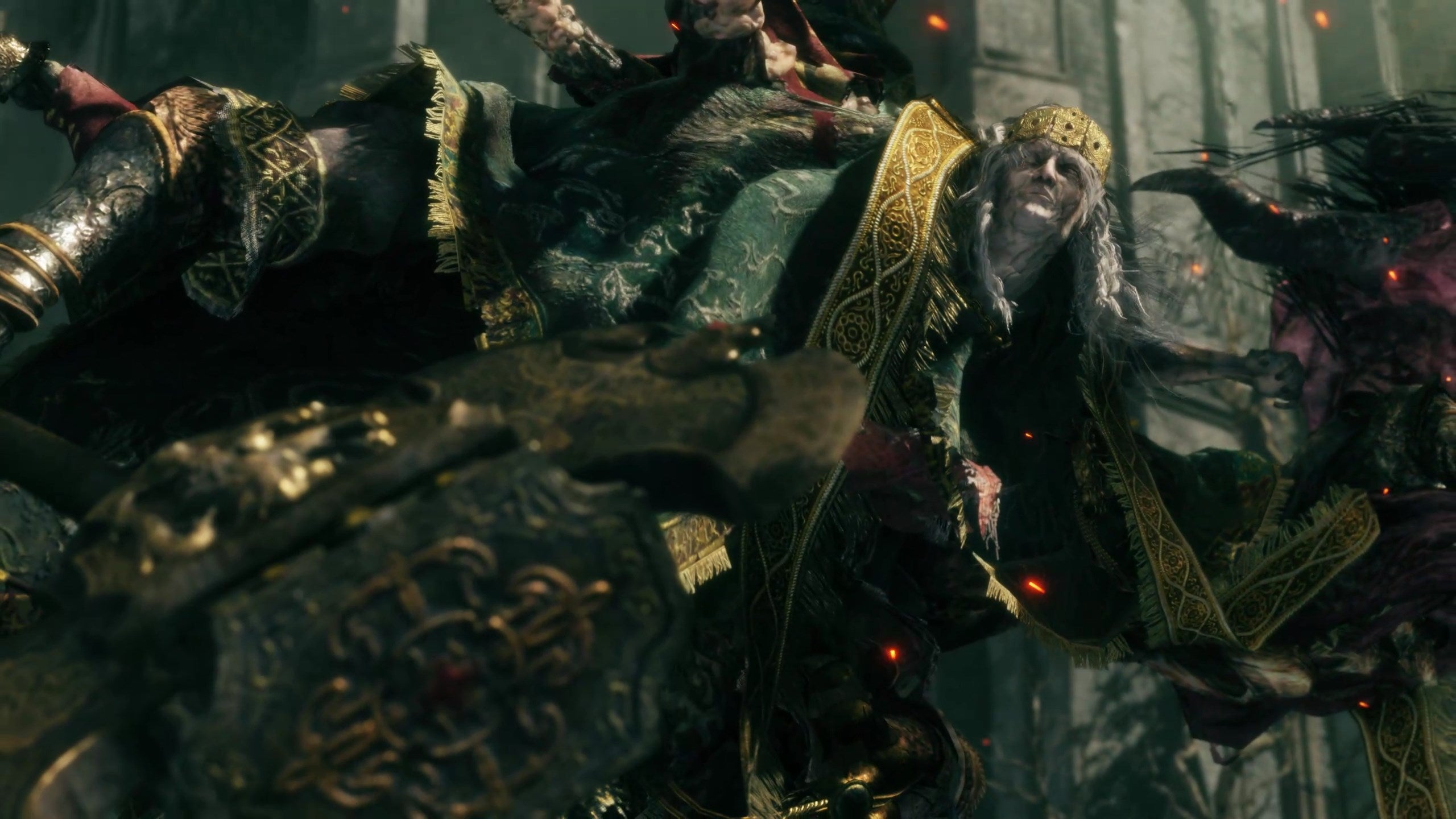In my first play-through of Elden Ring prior to its release, and then on my post-release New Game Plus run on Steam, I followed my classic Souls tenets: I started out with a sword and 100% shield, and only enough magic to cast the occasional healing spell or summon a spirit helper. I graduated, eventually, to a multi-weapon setup that included a crossbow, a longsword, and a giant club that I used in combination with some aggressive Ashes of War skills to stunlock bosses. I didn’t bother carrying any magic flasks; all health heals, all the time. Brute force and ignorance. I had great fun. Over the last week, however, I’ve started to chip away at a console Elden Ring save over on Xbox. Given this is now play-through three, I obviously wanted to do something different. I picked Astrologer as my starting class and decided to go full mage, embracing Elden Ring’s increased focus on the viability of magic at long last. And, wow – what a difference. It’s like a different game. Those of you who already played mages already know this, of course. But I know among Elden Ring players there’s a lot of people who think the way to play is with a melee focus. The iconic souls ‘look’ is a dude with a kite shield, a longsword, and heavy armor, and a lot of people play that way. I knew magic was viable in Elden Ring – but what I wasn’t quite prepared for is how different it feels. I’d argue that, right now, magic is actually a bit overpowered. I was surprised to see magic escape from the most recent patch mostly unscated. That’s the first point, actually: I think if you understand the basic precepts of Souls, and understand how to effectively dodge roll and exploit the timing of enemy attacks, mages are basically easy mode. You can stand back and decimate enemies from afar with even the starting spell. It’s impressive. I’m not talking about firing Comet Azure here (though that is surely where my build is headed); I’m talking about Glintstone Pebble, a well-leveled weapon, and maybe the Flask of Wondrous Physick set up with that buff to the potency of dodge rolls. I’m still early-game, but I ripped through basically all of the bosses in Limgrave and the Weeping Penninsula with ease, then beat Margit first try, and tore through Stormveil to beat Godrick on a second attempt. Also, for real, it’s been incredibly fun. There’s a few factors at play here, and all of them carry little lessons. First, Elden Ring has an incredible quality of being just as fun to play again when you know the game inside-out; it’s just fun in a different way. I think this is a really rare quality, and for me it’s only shared with a handful of games on this level – titles like Star Fox 64, Time Crisis, a few Zeldas, and so on. Second, FromSoftware has done a really good job of making magic viable. As mentioned, it might be too good a job – it is arguably a little OP. But it’s great to have the option, and have it be so real and fully fleshed out. Finally, and perhaps most important to me: I think this is the best way to play Elden Ring. Melee first; learn the game through the traditional Soulsborne grind and suffering that I’ve come to know and begrudgingly love. Then, after the game has pressed my body to the grindstone and left me broken, bruised, and yet victorious – a magical victory lap where I stand back and blast things to smithereens with magic. It’s incredibly satisfying… and it’s giving the game a whole new lease of life, almost 200 hours in. When I talked about Elden Ring being a masterclass in asset reuse, I didn’t even touch on this – on how even changing build and play style can truly turn the whole experience on its head. I could genuinely see myself making it to play-through four or five this year, which is just astonishing. Weeks later, and the brilliance isn’t fading; I’m just finding new angles from which to appreciate it.


